POSTCARD FROM 1952
Insight from makers Annie Gunn and Peter Simonite.
interview: Tiffany Diane Tso
images: courtesy Annie Gunn
Images and music sometimes marry so perfectly they seem to have been simultaneously created for one another. That is how the video for "Postcard From 1952" feels. Explosions in the Sky seem to create a soundtrack for this veritable collection of past life experiences. Spoiler alert: the song came first. Film-making power pair Annie Gunn and Peter Simonite have just artfully matched image to sound to create a music video that moves the past.
Unsurprisingly, both filmmakers have backgrounds working alongside the music industry. Gunn has worked in photography for 11 years, including shooting for friends Voxtrot. Simonite has worked in the film industry for 17 years including music videos for Spoon, on top of working on Terrence Malick's The Tree of Life, Skateland and more. The pair shared with us their inspirations behind the Postcard from 1952 video.
Where did the idea behind the video come from?
Annie Gunn: I think we started initially with the song's title ["Postcard From 1952"], which says so much. It was already our favorite song on the record, but we listened to the music over and over and over to visualize what the pictures might look like. The emotional palette of the song is just wonderful, and we knew we could go in many directions with it. It has a great build, from lilting and undulating to careening and crashing, and it was cool to think about how to match that with visuals, perhaps ones about the 1950s since that was the song's title.
At one point in the song, around 2 min, 45 sec, there is a wonderful percussive element that starts to tick, tick, tick and build. Combined with the idea of 1952, we pictured a kid running along a fence with a stick. As more images started to appear in our heads, something clicked for me -- most of the images that came to me were actual photographs that I'd seen before. I pictured a woman coming down the stairs and laughing, moving almost imperceptively slowly. This image was from a photograph I had pinned to my door for years and looked at every day. Now it was coming to life in my head. Over the years I'd collected a bunch of vintage snapshots, pictures just too special to be cast aside or forgotten about. When we started thinking of them, only now as slow-moving pictures, the idea just stuck.
Peter Simonite: The pictures struck an interesting chord in our imaginations, coupled with the song. I realized I was trying to understand these snapshots, imagining a story for each one about what must have happened before and after the frozen moment, and trying to read into the looks and awkward framings of the photos. We thought it might be interesting to see what happened just before and after each of these moments. By extending each one with slow motion, a brief emotional arc could be magnified.
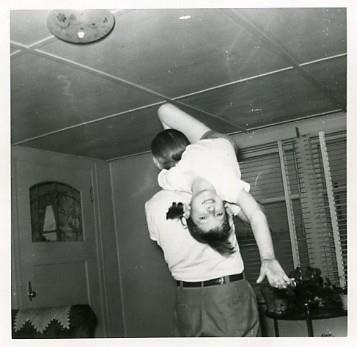
How did Explosions in the Sky collaborate with you?
Annie: Munaf, Mike, Chris and Mark were familiar with Peter's work on Tree of Life, and we and the band been talking about a video for a year or so. After Peter and I presented to them what we wanted to do and showed the original snapshots, they were immediately receptive to the idea. They basically gave us full artistic license to go forth and make what we wanted to make, which was so cool. I'm not sure it works like that with all bands. The EITS guys are true artists, and I think they trusted us to do right by their work.
Peter: Everyone involved with the band, including their management, was wonderfully encouraging. Munaf came to set and got to know the crew. The band was encouraging and trusting, which was so helpful. They are all such skillful collaborators and know how to express themselves very thoughtfully. Munaf gave us helpful insight into their process for writing such a beautiful song, and how the song was structured. It was up to us to pay homage with the visuals using the same kind of care and thoughtfulness. Munaf only gave one note to us while we were editing, and it was precisely correct and useful. We had included one too many shots, and he explained that that is exactly how they know when a song of theirs is completed, they then remove the unneeded element. He called it "adding by subtraction" and he was exactly right.
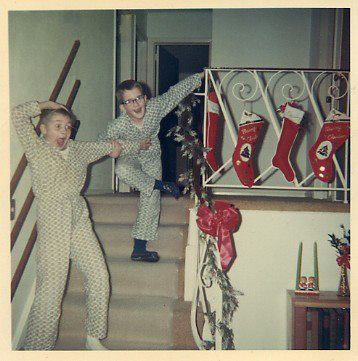
How did you cast these characters?
Peter: We were lucky enough to have an exceptional crew of friends, too, behind the scenes. All of our crew are superstars at what they do. There are too many to list here, but they are just top-notch artists, all of them.
Annie:We pieced the whole project together with resources we had in every possible element, from pre-production to shooting and post work, using people we know and love. Casting was no different. Luckily, I have a lot of beautiful and talented friends. Also, being an elementary school teacher means I know lots of kids. I knew who I wanted for many of the characters and cast those parts easily with friends of mine. Some of the casting was complete serendipity, though.
For instance, Memphis (boy with the raccoon cap) and Mackenzie (girl running along the picket fence) were used in many important scenes. They, along with four or five others you'll see in the video, just showed up on set the day of shooting. We were really very lucky. I also love that Kathleen and Ryan (kissing couple) are a real-life beautiful couple and in the bubble scenes, Shayla and Ruby are real-life mother and daughter. The older kissing couple toward the end were the in-laws of the kind people who let us use their house. Good fortune all around.
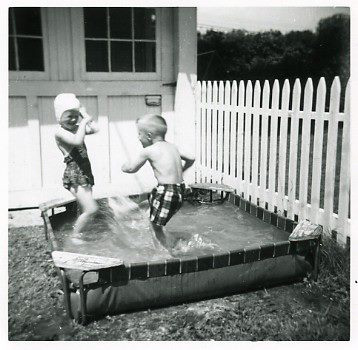
Where did you find most of the source photographs for the shots?
Annie: I've collected them over the years from all over. Mostly junk shops and antique stores. Several of them came from a great website that sadly isn't around anymore called Square America, which was a wonderfully-curated collection of very special and artful snapshots taken by families and amateur photographers.
Peter: We invented some of them on the shooting day as well.
Is there any place you like to go to look for them?
Annie: Uncommon Objects on South Congress in Austin. I've been going to that shop since I was a kid, and I just love it. Not only do they have bins and bins of vintage snapshots, it seems as though they they like to pull the very special ones to display here and there throughout the shop.
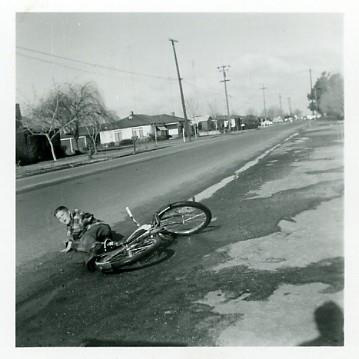
What is it about these past photographs that interested you?
Annie: It's a lot of things. One is a sense of time moving so quickly, and one moment gets to be frozen forever. Like when everyone's looking so young and vibrant in some snapshots, yet you know the people in them have probably passed away by now. The particular shots for the video all have something really special about them, though. A sweet scene, maybe, with some sour detail in it that tempers the sweetness just somewhat, just like real growing up. One minute it's your birthday party, the next minute you're getting punched in the face by a kid who stole your kaleidoscope. A picture like that has emotional dimension. In the original snapshot we used for that scene, one child hits the other while some kids stand beside them laughing and blowing up a balloon. And then you realize that, instead of intervening, an adult snapped this photograph at the moment of impact.
I think we all remember small traumas and childhood injustices from our own growing up, and Peter and I wanted to balance the sweetness of childhood up with more imperfect moments like this. That said, some are just sweet and completely full of wonder, like the snapshot of the girl and the bubble. We wanted to keep that one completely pure.
Peter: While we were looking at the original images and many more like it, we were struck by how universal all of these amateur snapshots were starting to seem. I think people are innately interested in capturing moments of emotional highs and celebrations. That is far more important than how technically good the photo itself is.
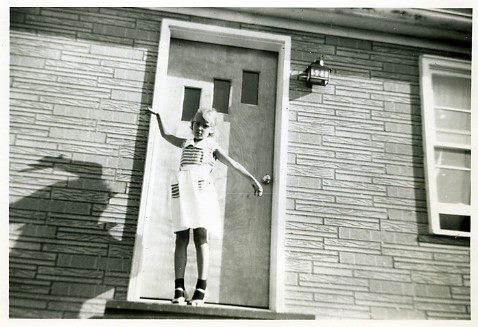
What about the past, in general, do you find inspiring?
Annie: For me, it's less about the past itself and more about the way the past has been captured and archived. The actual moments are gone, maybe even the people in them also, but there is a tiny record that remains and has a physical life-span that is longer than that of the humans pictured within it. Sixty years after the moment happened, a snapshot may be all but discarded, picked up by a stranger. That stranger looks at the moment and fills in all the unknown details. I think that idea is interesting.
Peter: It's funny, but to me the video isn't really about nostalgia for the past, or longing for a simpler time. I wasn't alive in the 50s , so I don't really have nostalgia for it. I feel personally, that what we made is more about bout brief emotional moments, and how interesting they can be, on a universal level.
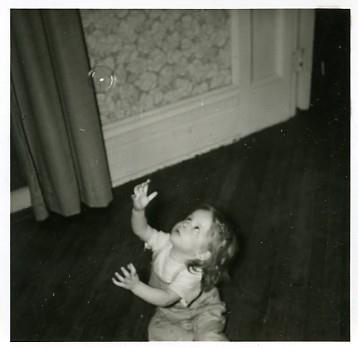
What inspires you to film?
Annie: There are lots of reasons, but for me, I've always taken pictures to try and capture the feel of something, an impression, not necessarily capturing realistic details. Photography is a wonderful tool, like music, for reflecting emotion. I think making "Postcard" had the same feeling, and that's why it was fun for me to collaborate with Peter who has outrageously sharp skills for capturing emotional and cinematic beauty.
Peter: My mother is a photographer, and she taught me to take pictures. It's something I enjoy and am lucky enough to do it for a living.
What else are you currently working on?
Annie: Finishing and releasing "Postcard From 1952" feels wonderful. We are ready for the next project. The two of us have lots of ideas for making more imagery for other musicians that we love, as well as other ideas that we are cooking up. Peter is currently in Hungary filming inside a cave for a movie that will come out later this year.
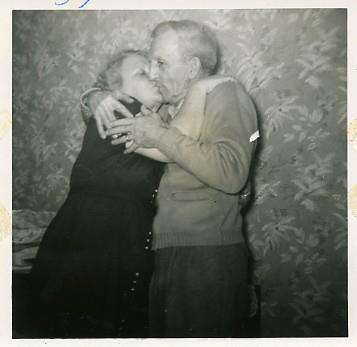
Anything else you think is worth mentioning?
Annie: I have got to give massive credit to the outstanding crew on this project, and to everyone who donated their time to help us out during late nights and extended hours of editing and post. We were fortunate to have had a top-notch film crew, people who worked to shoot Tree of Life, Martha Marcy May Marlene, Take Shelter, Dazed and Confused... we owe so much to them, and to the people who helped us edit and beautify the end result.
Peter: We are really pleased that so many people enjoy what we made.
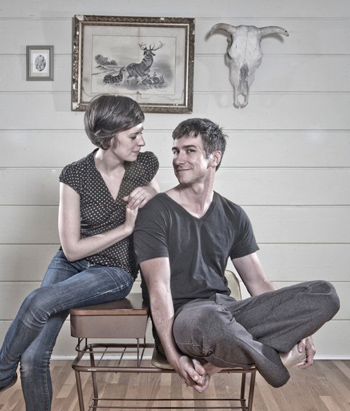
Annie Gunn and Peter Simonite, photo: Nicholas Simonite
"We thought it might be interesting to see what happened just before and after each of these moments. By extending each one with slow motion, a brief emotional arc could be magnified."
"People are innately interested in capturing moments of emotional highs and celebrations. That is far more important than how technically good the photo itself is."
